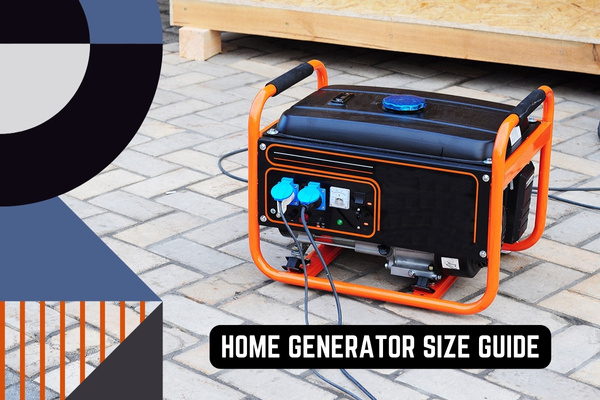When power outages hit, the comfort of your home hangs in the balance. You’ve probably asked, “How big of a generator do I need to keep my house bright and cozy?
Finding the right home generator size isn’t just about staying power; it’s about keeping life normal when things go dark outside. So let’s shine some light on getting that perfect fit for your home’s needs – because no one likes a cold dinner or a dark living room!
If you’re wondering what size generator can handle your house power requirements, think about everything you want to keep on—your fridge, lights, TV, and maybe even your heating system. You need a generator that can keep these essentials running smoothly.
So you’ll be looking at generators starting from around 3000 watts for very basic needs and climbing up to 20,000 watts or more for bigger homes with more gadgets.
Identifying Your Home Generator Size Needs
When the power goes out, having a generator to keep your house running can be a real lifesaver. But knowing what size generator you need isn’t always simple. Let’s talk about how to work this out.
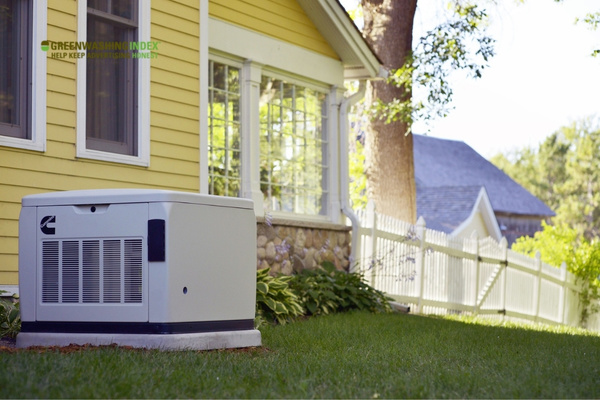
Assessing Your Power Requirements
Understanding your home’s power usage is super important when picking the right size generator. Here’s what you’ll need to do:
First, check the label on each appliance in your home for its wattage – that’s the number with a W next to it, which tells you how much power it uses. Make sure to look at both the ‘starting wattage’ (the extra power needed to start up an appliance) and the ‘running wattage’ (the regular amount of power it uses).
Next, make a list of everything you want to keep on when there’s no regular electricity. This could be fridges, lights, heaters or air conditioners – all that stuff.
Now add up all their running wattages – that gives you an idea of how much power your generator needs to provide just for those things to work at their normal level.
But remember, some things need more juice just to get started – like three or four times their normal amount! So don’t forget about those starting wattages when making your choice.
Doing all this adds up and helps you understand what home generator size is gonna keep everything running smoothly in case of an outage.
Prioritizing Essential Appliances
If getting a huge generator seems too much for your budget or space, it may be smart to pick only essential appliances during an outage. Here are some steps on how to prioritize:
- List down must-have items – Think fridge (to keep food from spoiling), basic lights (so you can see), heating/cooling system (depends on the weather), and maybe medical devices if someone needs them for health reasons.
- Safety comes first – Safety gadgets like smoke alarms should always have backup power.
- Get comfortable – Settling which comforts are necessary is up next – maybe keeping one room cool or warm is enough instead of doing so for the whole house.
- Charging stations – Having a place where phones can charge matters very much since they’re important communication tools during emergencies.
- Task-lightning over decoration – Functional lighting beats fancy lighting every time during these situations; so focus on spots where tasks get done like kitchens or studies.
Deciding which appliances matter most will drastically bring down your total needed generator size while still covering residential power needs effectively.
Combining both assessing your full house power requirements and prioritizing essential appliances is key in selecting the best generator size suitable for home use without going overboard with capacity and cost!
Also Read: Laptop Recycling: The Ultimate Eco-Friendly Guide!
Calculating Home Generator Size
When I think about having a backup generator for my home, it’s important for me first to figure out what size generator I need. The size of the generator is all about how much power it can make. Some houses will need a bigger one because they use more power, and some smaller homes can do just fine with a less powerful one.
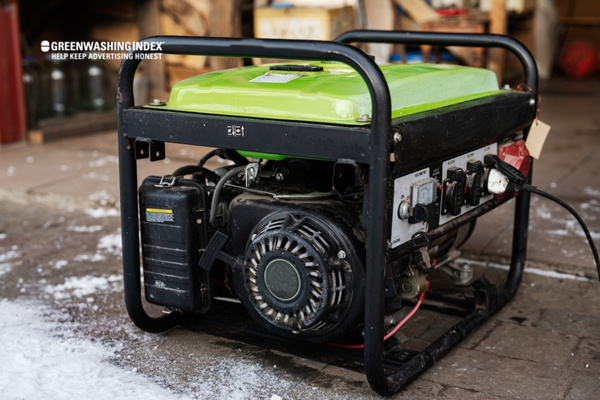
Understanding Wattage and Load Calculations
To choose the right home generator size, I start by figuring out the wattage requirements for my house. This means checking how much electricity each of my appliances and devices needs to work properly.
- List down: I write down each appliance that is important during a power outage, like the fridge, lights, or heating system.
- Find the wattage: Then, I look at their labels or manuals to find out how many watts each appliance uses.
- Add them up: Once I have all the numbers, I add them together – this gives me an idea of the total watts needed to run my essential stuff when there’s no other power.
- Starting watts vs running watts: Some things like air conditioners or pumps use more power when they first start up than when they’re just running normally (running watts). So it’s smart to think about these starting watts, too because they could affect what size generator I get.
- Extras for safety: Besides adding everything up exactly as it is, I also include a little extra on top—that’s my safety buffer so that if suddenly something uses more power than usual, my home will still be okay.
By doing this step-by-step process carefully and adding some wiggle room at the end (maybe around 10-20% more), now I know generally how big or small of a generator can do the job of powering my household essentials.
Types of Generators Based on Power Needs
Knowing which type of generators are out there helps me match one with what kind of home generator size fits best:
- Portable Generators: These are smaller in both physical size and how much electricity they can produce compared to other types. Perfect if you only need backup power for a few essentials like lights and fridges but not enough if you want your whole house running normally.
- Standby Generators: Standby ones are installed permanently near your house and start working automatically whenever regular electricity stops coming into your home from outside – really handy! These models often produce lots more electricity than portables – good enough even for big houses with high residential power needs.
- Inverter Generators: When you need clean energy – which means electricity that doesn’t go up and down in quality – then inverter generators are great! They’re usually quieter as well as nicer to sensitive devices like computers or TVs; although often not made for powering every single thing in your home due to their moderate output.
So when thinking about things like lighting up every corner of your place during an outage or making sure food stays cold when regular grid energy isn’t available – choosing between these depends on balancing both overall ‘wattage requirements’ required by appliances throughout your living space versus preferences surrounding noise levels alongside energy quality concerns applicable towards particular devices within the range being lowered accordingly.
Larger homes with many gadgets might lean toward standby generators while smaller homes using fewer electronics/critical items stay contented via less substantial portable/inverter variants respectively!
Also Read: DIY Solar Generator Blueprint: Power Up Your Home!
Types of Home Generators and Size Considerations
When you think about keeping your house powered during an outage, you may ask yourself, “What size generator do I need for my home?” Well, let’s talk about two main types of generators: standby and portable. Each has its own impact on the home generator size you’ll need.
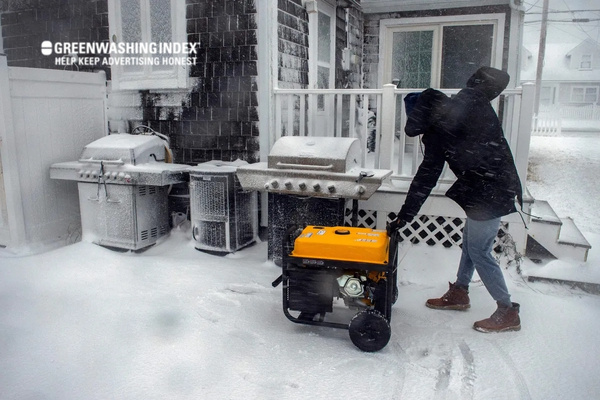
Standby vs Portable Generators
Standby generators:
- Installed permanently: They sit outside your house like an AC unit.
- Auto start: They kick in automatically when the power goes out.
- Higher power output: Can often power your whole house.
- More expensive: Both to buy and to install.
Portable generators:
- Moveable: You can take them where needed, not just for home use.
- Manual start: You have to turn them on yourself when there’s a blackout.
- Varied sizes: From small units that power a fridge to larger ones that can power several appliances.
- Less costly: Cheaper than standby units; no installation costs.
When thinking about home generator size, consider this:
A standby generator is more powerful than most portable ones. If you want to keep your entire house running smoothly during a blackout, a big standby generator is the way to go. But if you only need to keep a few key things going like your fridge and lights, then a smaller portable one might be enough.
Selecting the best generator size for a portable option often means looking at what appliances are must-haves during an outage and adding up their wattages.
Features that Affect Generator Size
There are also some nifty features on generators that can affect which size you choose:
Start type:
- Manual: These require you to start the engine yourself. Simple but sometimes inconvenient in bad weather or at night.
- Automatic: Standby generators usually have this feature. They detect the outage and turn it on by themselves—super handy!
Power management systems:
These systems help manage how electricity is distributed around your house. Here’s how they impact home generator size:
- With smart power management, even smaller-sized generators can handle larger demands because they’re more efficient in supplying electricity where it’s needed most.
So there we have it! When selecting the best generator size for your residential power needs, remember these:
- Standby is bigger and more expensive but powers everything automatically.
- Portable means smaller and cheaper but requires manual effort every time there’s an outage.
And don’t forget bonus features like automatic starting and smart management systems—they might mean you can get away with a smaller generator while still covering all your basics!
Also Read: Solar Generator Insights: Can It Really Power Your Home?
Home Generator Sizing Chart Explained
When it comes to figuring out what size generator you need for your house, a home generator sizing chart can be super handy. But before we dive into that chart, let’s talk about some important words you’ll see: “running watts” and “starting watts.”
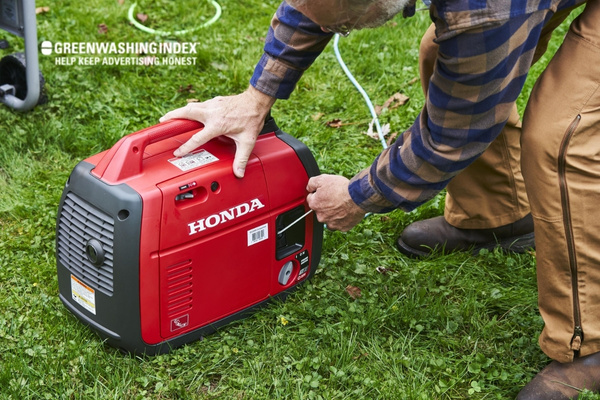
Understanding Power Output Labels
Running Watts: This is the number of watts a generator can handle all the time. It’s like a runner’s normal speed – not too fast, not too slow. For example, your fridge might need 700 running watts to keep cool every day.
Starting Watts: Some things need an extra push to start up. Starting watts are like the burst of energy you get when you sprint at the start of a race. So that same fridge might need 2,200 starting watts just to get going.
When picking out a home generator size:
- First, list everything in your house that needs power.
- Note down both running and starting watts for each item.
- Add up all the running watts – this gives you a base number.
- Look for the item with the highest starting wattage. We’ll call this “the big starter.”
- To figure out total power needs: Take your base number and add “the big starter” wattage to it.
This is how much oomph your home generator should have.
Real-Life Examples of Generator Sizes for Homes
Let’s look at some real-life examples:
- Small Home or Apartment: Maybe it’s just you and some basics like lights, fridge, and computer.
- Running Watts Needed: Roughly 3,000 to 5,000
- Starting Watts Needed: 5,000 to 7,500
- Home Generator Size: A cozy 5 kW (kilowatt) generator could do just fine here.
- Medium House with More Appliances: You’ve got more rooms and maybe fancy heating or air conditioning.
- Running Watts Needed: About 5,000 to 7,500
- Starting Watts Needed: Could hit around 7,500 to 10,000
- Home Generator Size: Aim for something beefier – an 8 kW generator should cover you.
- Large House with All Bells & Whistles: If you live in a mansion with loads of gadgets or maybe even tools in a workshop.
- Running Watts Needed: Likely over 10,000
- Starting Watts Needed: You might peak at around 20,000
- Home Generator Size: You’re looking at needing at least a hefty 20-kW generator!
Always remember these numbers are guides – always check exactly what ya need before buying! By getting these details right on a spot-on match between house power requirements and residential power needs when selecting the best generator size for your place will be secure as a house!
Also Read: Solar Batteries Essentials: Top Tips for Savvy Shoppers!
Safety Considerations in Home Generator Size Selection
When it comes to keeping the lights on and our homes running smoothly during a power outage, many of us think about getting a generator. But it’s really important to choose one that’s just the right size. Here’s why:
The Importance of Correct Sizing for Safety
To pick out a generator that’s safe for my house, I can’t just guess. If I get one that’s too small or too big, there could be some real problems.
- When a generator is too small.
- It might not be able to power all the important stuff in my house.
- It could overwork itself trying to keep up, which is dangerous.
- The electrical setup could get damaged because it’s got more load than it can handle.
- On the other hand, if my generator is too big.
- I’ll be spending way more money than needed – both buying it and running it.
- A super-big generator doesn’t run efficiently if it’s only powering a few things. That’s like using a huge truck just to carry one bag of groceries.
So you see, getting a generator that isn’t the right home generator size isn’t safe or smart.
Professional Assessments for Accurate Size Determination
Trying to figure out the best home generator size can be tricky. So here’s what I suggest: talk to someone who knows their stuff! A professional can help me work out exactly what size I need by looking at:
- My house power requirements: They add up all the electricity my house will use during an outage – from fridges and freezers to lights and laptops.
- Appropriate sizing: Together with safety guidelines, they pick out a generator match perfect for my place.
- My plans for use: Whether I need backup just for emergencies or maybe more often affects which kind of machine we should look at.
Having an expert take care of this means no second-guessing myself – and knowing my family will stay cozy and safe without risking anything blowing up because we guessed wrong about our residential power needs.
Safety matters heaps when selecting the best home generator size, so better leave this job to the pros!
Conclusion
Selecting the right home generator size isn’t just about keeping the lights on; it’s about ensuring your family’s comfort during power outages without risking safety.
Understanding your house’s power requirements, prioritizing essential appliances, and knowing the types of generators can help you make an informed decision. An accurate load calculation is paramount to finding the generator that fits your residential power needs.

